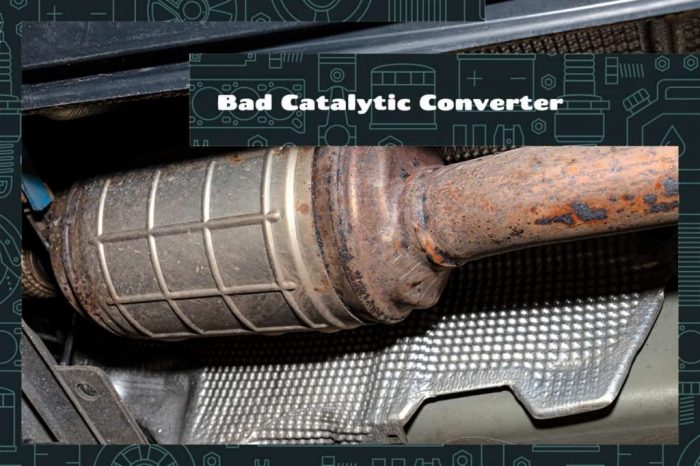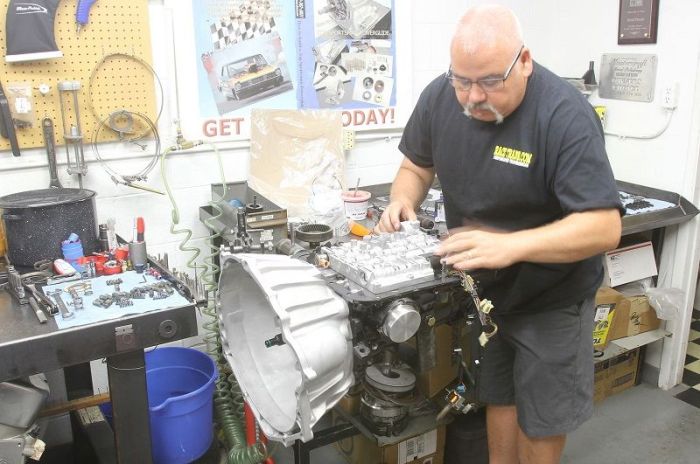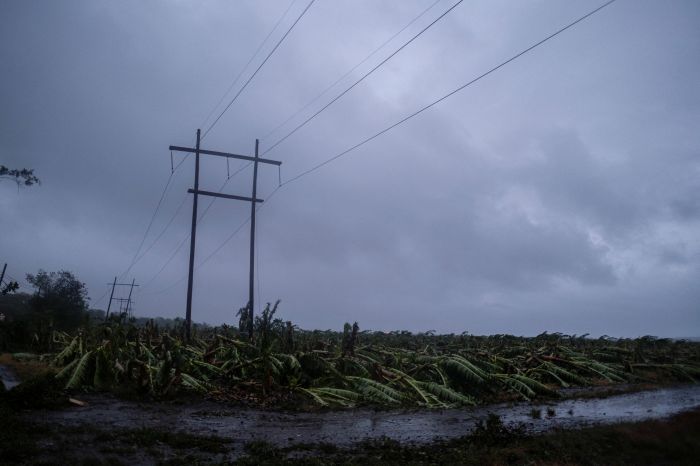How to know if catalytic converter is bad? This guide delves into the telltale signs of a failing catalytic converter, from the subtle whispers of exhaust fumes to the dramatic roars of a dying engine. We’ll explore the nuances between a slightly off converter and one that’s completely kaput, and how to distinguish this issue from other exhaust system problems.
Get ready to become a catalytic converter detective!
Understanding the crucial role of this part of your car’s exhaust system is key. A malfunctioning converter can wreak havoc on your engine performance, lead to hefty repair bills, and even have a detrimental impact on the environment. This comprehensive guide equips you with the knowledge to diagnose the problem and potentially save yourself some serious trouble.
Identifying Symptoms

Yo, peeps! Knowing if your catalytic converter is on its last legs is crucial for your ride. It’s not just about the annoying sounds, but also potential damage to your engine and your wallet. Let’s dive into the telltale signs, so you can catch the problem early and avoid major headaches.
Noticeable Signs of a Failing Converter
Understanding the symptoms is key to getting your car checked out ASAP. Different levels of converter failure will manifest in varying ways. A slightly failing converter might just give you a few subtle hints, while a completely fried one will scream for attention.
- Exhaust Sounds: A rumbling or popping sound, especially when accelerating or idling, can indicate a problem. A high-pitched whine or a whistling sound might also signal a leak in the system. Think of the difference between a smooth purr and a grumpy growl – that’s a clue.
- Exhaust Smells: A strong, sulfurous or rotten egg smell coming from the exhaust is a dead giveaway. This is a clear sign that something’s not right, and the converter isn’t doing its job of filtering harmful gases. If you’re smelling something funky, don’t ignore it!
- Visual Indicators: Look for any unusual discoloration or damage to the converter itself. A noticeable discoloration or melting around the converter is a big red flag. A crack or hole in the converter will make the issue more obvious. Check under your car, especially if there’s any unusual buildup or discoloration around the exhaust pipe.
Differentiating Severity Levels
Recognizing the difference between a slightly failing and a completely failed catalytic converter is crucial. Early detection is key to preventing more serious problems down the line.
- Slightly Failing Converter: Early symptoms might be subtle, like a slightly rougher idle or a faint sulfurous smell. Exhaust sounds might be a little louder than usual, but not significantly disruptive. These signs can often be mistaken for other issues. But they are still important to pay attention to!
- Completely Failed Converter: The symptoms become much more pronounced. The exhaust sound will be noticeably louder, possibly with a popping or rattling noise. The smell will be more intense, almost overpowering. Visual inspection will likely reveal damage or significant discoloration around the converter. If it’s this bad, you might need a serious fix pronto.
Distinguishing from Other Exhaust Problems, How to know if catalytic converter is bad
Other exhaust system issues can sometimes mimic a failing catalytic converter. It’s essential to distinguish the problem to ensure you get the right repair.
- Exhaust Leaks: Leaks in other parts of the exhaust system can cause similar smells, but usually don’t have the same accompanying sounds as a failing catalytic converter. A leak might be hissing or whistling, not a rumbling sound. A leak is more localized, while a bad converter will usually have a more generalized issue.
- O2 Sensor Issues: Faulty oxygen sensors can also affect engine performance and cause exhaust issues. The symptoms can sometimes overlap, but O2 sensors usually don’t have the same strong smell or significant visual damage to the exhaust system.
Symptom Comparison Table
This table helps you compare symptoms, severity, and possible causes:
| Symptom | Description | Severity | Possible Causes (including other components) |
|---|---|---|---|
| Exhaust Sound Changes | Loud rumbling, popping, or whistling | Mild to Severe | Failing Catalytic Converter, Exhaust Leaks, O2 Sensor Issues |
| Exhaust Smell | Strong sulfurous or rotten egg odor | Mild to Severe | Failing Catalytic Converter, Exhaust Leaks, Fuel System Issues |
| Visual Inspection | Discoloration, melting, cracks, or holes | Severe | Failing Catalytic Converter, Exhaust Leaks |
| Engine Performance | Rough idle, hesitation, or decreased power | Mild to Severe | Failing Catalytic Converter, O2 Sensor Issues, Fuel System Issues |
Troubleshooting Methods

Nah, gini nih, masalah catalytic converter, ga cuma diliat dari suara aja. Ada banyak cara buat ngecek, biar ga salah diagnosis, dan duit ga jebol sia-sia. Kita bakal bahas berbagai metode troubleshooting, dari yang visual sampe pake alat, biar dapet hasil yang akurat.Diagnosa yang tepat penting banget buat ngatasi masalah catalytic converter. Kalau salah diagnosis, bisa sia-siain waktu dan duit, malah bikin masalah makin rumit.
Makanya, penting banget buat ngertiin langkah-langkah troubleshooting dengan detail.
Visual Inspection Methods
Visual inspection merupakan langkah awal yang penting untuk mendeteksi masalah pada catalytic converter. Periksa secara menyeluruh area sekitar converter untuk tanda-tanda kerusakan fisik seperti retakan, penyok, atau bagian yang meleleh. Perhatikan juga kondisi knalpot dan apakah ada kebocoran atau penyumbatan.
Basic Exhaust System Checks
Memeriksa sistem pembuangan penting untuk mendeteksi kebocoran atau penyumbatan yang bisa memengaruhi kinerja catalytic converter. Periksa apakah ada kebocoran di area sambungan antara pipa knalpot dan catalytic converter. Suara dengung atau mendesis saat mesin menyala bisa jadi indikasi kebocoran.
Step-by-Step Catalytic Converter Inspection
Berikut langkah-langkah untuk memeriksa kondisi fisik catalytic converter:
- Posisikan kendaraan di tempat yang aman dan nyaman. Pastikan ada akses yang mudah ke bawah mobil.
- Lepaskan penutup atau aksesoris yang menghalangi akses ke catalytic converter. Gunakan alat yang sesuai untuk menghindari kerusakan.
- Periksa secara visual kondisi catalytic converter. Cari retakan, penyok, atau kerusakan lainnya. Perhatikan juga apakah ada bagian yang meleleh atau berkarat.
- Periksa area sekitar converter untuk tanda-tanda kebocoran atau penyumbatan. Periksa sambungan pipa knalpot.
- Jika memungkinkan, periksa kondisi material catalytic converter. Pastikan tidak ada bagian yang terbakar atau meleleh.
Diagnostic Tools Comparison
Berbagai alat diagnostik bisa membantu dalam mendeteksi masalah catalytic converter. Scanner diagnostik, contohnya, bisa membaca kode kesalahan yang muncul di ECU. Alat ini bisa membantu menentukan penyebab masalah secara lebih detail. Sedangkan, alat pengukur tekanan, bisa membantu mendeteksi kebocoran dalam sistem pembuangan. Pilih alat yang sesuai dengan kebutuhan dan kemampuan untuk hasil yang akurat.
Troubleshooting Procedure Table
| Procedure | Materials Needed | Steps | Expected Results |
|---|---|---|---|
| Visual Inspection | Flashlight, Gloves | Inspect the catalytic converter for damage, leaks, and blockages. | Visible damage or leaks indicate a potential problem. |
| Exhaust Leak Test | Soapy water, spray bottle | Spray soapy water around exhaust joints and listen for bubbles. | Bubbles indicate a leak. |
| Scanner Diagnosis | OBD-II scanner | Connect the scanner to the vehicle’s diagnostic port and read codes. | Error codes pinpoint potential problems. |
| Exhaust Pressure Gauge | Exhaust pressure gauge | Connect the gauge to the exhaust system to measure pressure. | Low pressure indicates a blockage or leak. |
Understanding the Role and Importance: How To Know If Catalytic Converter Is Bad
Yo, peeps! Ever wonder what that metal canister under your car is actually doing? It’s more important than you think, especially for the planet and your ride’s health. Let’s dive into the crucial role of the catalytic converter.Your catalytic converter isn’t just some random part; it’s a crucial part of your car’s exhaust system. Think of it as the environmental superhero of your engine, transforming harmful gases into less harmful ones.
Without it, your car would be spewing out a lot more pollution into the air.
Catalytic Converter Function
The catalytic converter’s main job is to reduce harmful emissions like carbon monoxide (CO), nitrogen oxides (NOx), and unburnt hydrocarbons (HC). These emissions, if released directly into the atmosphere, can cause serious environmental problems. It does this through a series of chemical reactions.
Environmental Impact of a Failing Converter
A failing catalytic converter means more harmful gases are escaping into the air, impacting air quality and contributing to global warming. Imagine a whole bunch of cars all spewing out dirty exhaust – that’s a pretty rough picture for the environment. It can also lead to respiratory problems for people living nearby.
Consequences of Ignoring a Failing Converter
Ignoring a failing converter isn’t just bad for the environment; it’s also bad for your car’s engine. It can lead to a host of problems, like engine damage, higher repair costs, and potential fines from authorities. Imagine your car having to work harder to compensate for the converter’s failure. That’s not good for its longevity.
Effect on Engine Performance
A faulty catalytic converter can negatively impact engine performance. It can cause the engine to run rough, lose power, or even cause a complete engine failure. The engine has to work harder to compensate for the converter’s inability to effectively manage exhaust. This can lead to reduced fuel efficiency and increased emissions in other ways.
Chemical Processes Within the Converter
Inside the catalytic converter, a series of chemical reactions occur. Harmful gases are transformed into less harmful ones through the use of catalytic materials like platinum, palladium, and rhodium. Basically, the converter acts as a chemical reactor. Think of it as a specialized factory that processes exhaust gases, converting harmful substances into less harmful ones.
Example: CO + 1/2O2 → CO2
Types of Catalytic Converters
Different catalytic converters use different designs and materials. Some are more efficient at converting harmful gases than others. The efficiency often depends on the type of metals used in the converter. Some converters are designed for specific types of vehicles or fuels.
Potential Causes of Premature Failure
A catalytic converter can fail prematurely due to a number of reasons:
- Poor fuel quality: Low-quality fuel can contain impurities that can damage the converter.
- Overheating: High engine temperatures can damage the converter’s materials.
- Improper installation or maintenance: A poorly installed or maintained converter is more likely to fail prematurely.
- Mechanical damage: Physical damage to the converter, like a collision, can lead to failure.
- Fuel modifications: Tuning or modifying the fuel system improperly can lead to the converter’s premature failure.
These factors can lead to a converter’s failure before its expected lifespan, impacting both the vehicle and the environment. It’s crucial to maintain your car properly to prevent this.
Wrap-Up
In conclusion, identifying a failing catalytic converter involves a combination of keen observation, diagnostic procedures, and an understanding of your car’s exhaust system. By paying attention to subtle changes in sounds, smells, and visual cues, you can often catch the problem early, potentially preventing costly repairs and environmental damage. Armed with this knowledge, you’re well-equipped to keep your car running smoothly and your exhaust system healthy.
So, keep your ears open, your nose alert, and your mechanic’s number handy!
Q&A
What are some common smells associated with a bad catalytic converter?
A bad catalytic converter can produce a sulfurous or rotten egg smell, or a strong metallic odor. These smells can vary depending on the specific problem.
How long does it typically take to replace a catalytic converter?
Replacing a catalytic converter can take anywhere from a few hours to a full day, depending on the complexity of the job and the availability of parts.
Can a bad catalytic converter cause engine misfires?
Yes, a clogged or damaged catalytic converter can lead to engine misfires and rough idling, impacting the engine’s overall performance.
Are there any preventative measures I can take to prolong the life of my catalytic converter?
Maintaining good driving habits, like avoiding excessive idling and ensuring regular maintenance, can help extend the lifespan of your catalytic converter.
 Nimila
Nimila



